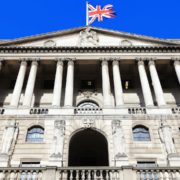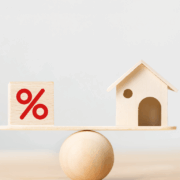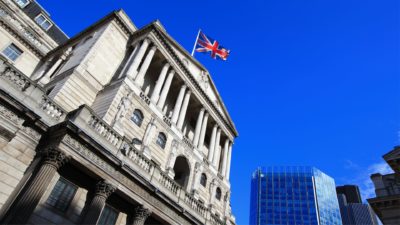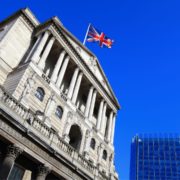The Nationwide House Price Index released this morning has revealed that house prices grew by 0.2% month on month in June
Overview:
- Annual Growth: UK house prices increased by 1.5% in June 2024 compared to a year ago.
- Monthly Growth: House prices rose by 0.2% from May 2024, with the average house price reaching £266,604.
- Regional Performance: Northern Ireland leads with a 4.1% annual increase in Q2 2024, while East Anglia saw a 1.8% annual decrease.
Monthly and Annual Changes:
- Monthly Index: Increased from 523.8 in May 2024 to 524.8 in June 2024.
- Monthly Change (Seasonally Adjusted): Prices grew by 0.2% in June 2024, slightly down from a 0.4% increase in May 2024.
- Annual Change: The annual rate of growth rose from 1.3% in May 2024 to 1.5% in June 2024.
Detailed Analysis
House Price Index and Monthly Changes
- Monthly % Change (Seasonally Adjusted):
- June 2024: +0.2%
- May 2024: +0.4%
- Annual % Change:
- June 2024: +1.5%
- May 2024: +1.3%
- Average Price (Not Seasonally Adjusted):
- June 2024: £266,604
- May 2024: £264,249
Commentary by Robert Gardner, Nationwide’s Chief Economist:
- UK house prices edged up by 0.2% in June after seasonal adjustment.
- Annual growth increased from 1.3% in May to 1.5% in June 2024.
- Prices remain about 3% below the all-time high of summer 2022.
- Housing market activity is subdued, with total transactions down by 15% compared to 2019 levels, and mortgage transactions down nearly 25%.
- Cash transactions are up 5% above pre-pandemic levels.
Affordability:
- Earnings growth outpaced house price growth recently but higher mortgage rates offset this advantage.
- Average monthly mortgage payment is now 37% of take-home pay, up from the long-run average of 30%.
Regional Performance in Q2 2024
Best Performing Region:
- Northern Ireland: Prices up 4.1% year-on-year.
Weakest Performing Region:
- East Anglia: Prices down 1.8% year-on-year.
Regional Comparisons:
- England Overall: Prices up 0.6% year-on-year.
- Wales and Scotland: Both saw a 1.4% year-on-year rise.
- Northern England: Prices up 2.4% year-on-year.
- Southern England: Prices fell 0.3% year-on-year.
- London: Annual price growth of 1.6%.
Historical Monthly House Price Statistics (2022-2024)
- June 2022: Annual change 10.7%, average price £271,613
- June 2023: Annual change -3.5%, average price £262,239
- June 2024: Annual change 1.5%, average price £266,604
Recent Trends:
- October 2022: Notable decrease of 1.3% in the monthly index.
- December 2022 to February 2023: Monthly decreases with an annual decline reaching -3.1% by March 2023.
- March 2023 to June 2023: Mixed changes with small monthly adjustments and annual declines.
- January 2024 to June 2024: Gradual improvement with consistent annual growth returning by February 2024 and steadying in subsequent months.
Conclusion
The UK housing market shows signs of recovery with modest annual growth, although affordability remains a challenge due to high mortgage rates. Regional disparities persist, with Northern Ireland leading in growth and East Anglia experiencing declines. Housing market activity continues to be lower than pre-pandemic levels, especially for mortgage-financed transactions.
Industry comments:
Jeremy Leaf, north London estate agent and a former RICS residential chairman says: “Early spring optimism all but disappeared when it became apparent that any reduction in mortgages rates would be delayed. This reliable indicator of housing market health also shows how the election announcement had little impact on prices or activity and underlines how cash purchases are playing a more important role.
“Now that inflation has started to fall, expectations are growing that the drop in base rate may not be delayed too long after all.”
Michelle Stevens, mortgage expert at personal finance comparison site finder.com gives her thoughts:
“As expectations of an upcoming base rate cut continue to grow, the market seems to be stabilising in anticipation of lower rates on the horizon. Although prices only edged up very slightly last month, over the last couple of weeks we’ve seen a few of the major banks reduce their mortgage rates, and this will no doubt help provide a much needed boost to confidence in the housing market.
If more banks follow suit, I’m hopeful that this could trigger a price war amongst mortgage lenders, which would be great news for buyers and the millions of people who are due to renew their mortgage this year.”
Mark Harris, chief executive of mortgage broker SPF Private Clients, says: “With inflation hitting the Bank’s 2 per cent target, we are edging ever closer to that first rate cut, perhaps as soon as next month.
“After years of rising rates, followed by months of holds, that first reduction when it comes will send an important message to borrowers, enabling them to plan their moves with more confidence. In many ways it will influence homebuyer decision-making far more than the outcome of the election, which many feel is a foregone conclusion.
“That said, borrowers will still have to get used to paying more for their mortgages, with the days of rock-bottom rates long gone.”
Amy Reynolds, head of sales at Richmond estate agency Antony Roberts, says: “The situation is very concerning for first-time buyers. House prices may have come off a little from their post-pandemic highs but this is more of a correction than a fall and homeownership is still out of reach for many, with high borrowing costs not helping the situation.
“One trend we are seeing is people looking to financially downsize to release capital to live on and pay bills, which is hugely concerning.
“The property market tends to pick up after an election. If this election is followed by an interest rate cut in August, this would set the housing market up nicely for the autumn, dispelling uncertainty and boosting affordability.”
Daniel Austin, CEO and co-founder at ASK Partners, said: “The property sector is recovering. Rent values have seen sustained growth, positioning real estate as reasonably valued in comparison to gilts and presenting growth potential. In the realm of commercial real estate, factors like physical condition, location, and age significantly influence a property’s value. Well-maintained properties boasting modern amenities tend to command higher prices, while neglected ones may struggle to attract tenants or investors. In the current market, the emphasis has shifted towards the importance of location and quality over the yield on debt or cost. We anticipate opportunistic acquisitions of prime properties in prime locations.
“A RICS survey uncovered that non-traditional market segments, such as aged care facilities, student housing, data centres and life sciences real estate are yielding the most robust returns. With housing set to be a battleground point in this week’s election, we hope to see a long-term plan for new homes, including social housing, however, we expect we will see more short term fixes. Stimulus will be welcome but can create unnecessary froth. A stamp duty holiday or reprieve may be a welcome sign. For developers, eased planning regulations for brownfield sites and conversions will be popular. However, the new government will be faced with a challenge – striking a balance between trying to increase housing supply and therefore affordability by supporting developers and private landlords who do not want to see greenfield development. The planning system remains hotly political and as a result, landlords and developers are unlikely to see much in their favour.
“As a debt provider, we hope to support the best sites in prime locations with well-capitalised sponsors who understand their product. Following this strategy, we aim to bolster developers’ initiatives with the flexible underwriting approach that is necessary for navigating current planning rules and market uncertainty. This will enable us to continue to offer opportunities for the growing number of private individuals opting to invest in property debt.”
Tomer Aboody, director of specialist lender MT Finance, says: “A slight change but the market was mostly stable in June, which is a reflection of overall recent sentiment, with interest rates remaining steady along with inflation reducing.
“We are possibly looking at a reduction in interest rates shortly which will inevitably lead to a price and activity increase in the housing market.
“A push from government is needed to increase activity, and hopefully after the election, whoever is running the country will look to implement some sort of change in order to assist buyers.”



























Comments